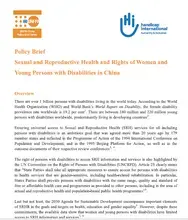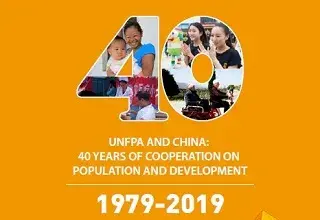The first reproductive health kits were developed by Marie Stopes International in 1992, specifically for use during the Bosnian crisis, when thousands of women were raped and there was an urgent need for appropriate medical equipment. The Sexuality and Family Planning Unit of the World Health Organization (WHO) Regional Office for Europe then reviewed and updated these kits for a second phase in Bosnia.
In 1997, unrest in Albania led to the collapse of the health system and maternity hospitals urgently requested basic surgical equipment to respond to the reproductive health needs of women. A referral/surgical obstetrics kit was designed by the representative of the United Nations Population Fund (UNFPA) in the country, which was intended to be adapted to local situations.
A third version of the kits was assembled by a number of agencies, including the International Federation of Red Cross and Red Crescent Societies (IFRC), UNFPA, the United Nations High Commissioner for Refugees (UNHCR) and WHO, to respond to the refugee crisis in the Great Lakes region of Africa in 1997.
These experiences led UNFPA to produce a consolidated set of reproductive health kits for use by organizations responding to humanitarian emergencies. These kits are intended to speed up the provision of lifesaving reproductive health services in acute humanitarian settings, such as mass population displacements and natural disasters. The first version of the current reproductive health kits was agreed on by the members of the Inter-Agency Working Group (IAWG) on Reproductive Health in Crisis in June 1997 and became available from June 1998. A survey among
field users was conducted by UNFPA at the end of 1999 and the survey results were discussed at the fifth IAWG meeting in February 2000. In July 2000, an IAWG subgroup developed a revised version of the kits with input from field users. Further reviews in 2003, 2005, 2010 and 2013 led to modification of the contents of the kits, based on suggestions of users, newly identified needs and new technologies.
The current revision is informed by an in-depth technical review of recent evidence- based treatment updates, as well as by the outcome of a 2017 research study on the use of the kits, which investigated the causes and consequences of over-ordering and waste, as well as logistics and supply chain challenges, and elicited feedback from users. The Interagency Emergency Reproductive Health Kits are now in their 6th edition. This booklet provides information on their contents, use and ordering procedures as of January 2020.
The Inter-Agency Emergency Reproductive Health (IARH) kits are complementary to the Inter-Agency Emergency Health Kit (IEHK) and other health kits designed to meet the primary health-care needs of people affected by humanitarian emergencies.
Users are invited to make comments on this revised version of the IARH kits. All inputs will be considered for future revisions. Comments and suggestions should be sent to Humanitarian-SRHsupplies@unfpa.org.




